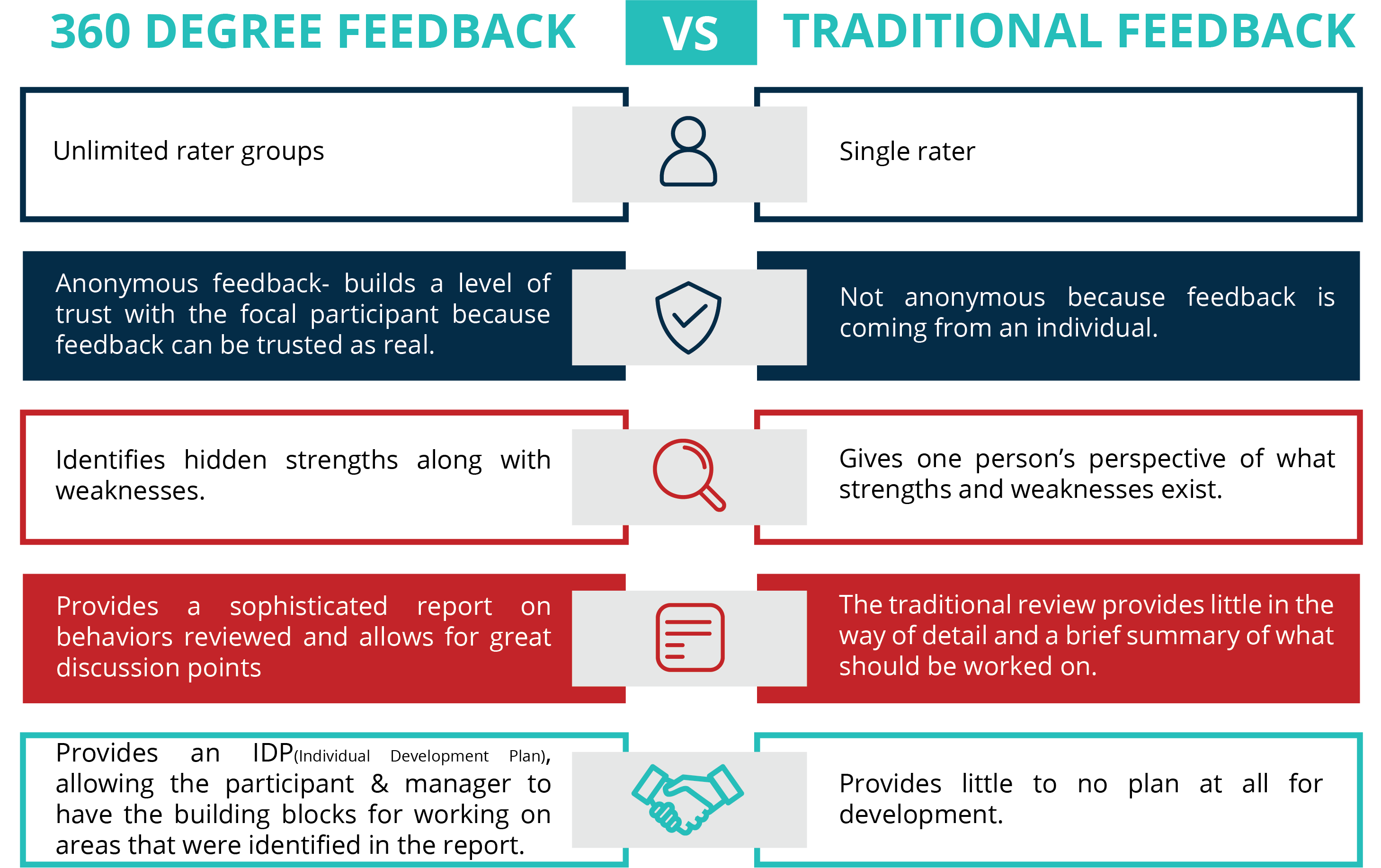Traditionally, feedback is given from a superior directly to their direct report. It could be a Vice President sitting for their annual review with the CEO, who provides feedback from what they have observed or in some cases what they have been told by others. Or it could be the VP giving feedback directly to the director who works for them. 360 Degree Feedback provides a much different approach – it allows for multiple people at different levels of the organization that work with the person getting reviewed to provide feedback and thus get that full perspective.
5 ways 360 Feedback differs from Traditional Feedback

As you can see, 360 Degree Feedback is a much more comprehensive way to provide feedback to a leader compared to the traditional approach. Something to keep in mind is that the number one reason for a person to leave their job is having an issue with their manager. A lot of times leaders simply are ill equipped to give feedback to their direct reports. Using 360 Feedback as a tool can make the process for everyone involved better because it is comprehensive, provides real insights, takes the manager out of the equation to a certain degree and provides true guidance in developing the leader going through the process.
Today’s leaders want to feel like they get the feedback they need to grow. Some demand it as part of their hiring process and the reason is that they are lifelong learners and feel valued by the company investing in processes that lead to their growth as a leader. Don’t fall short in this area or you will pay the price with unhappy leaders and potentially turnover.
Related Resource: 360 Degree Feedback—Your complete guide
Related Blog Post: What does the 360 Degree Feedback process look like?


 Dr. Jaffee (M.A., Ph.D.) is a recognized expert in the field of assessments, and has created effective HR Solutions used by millions of people.
Dr. Jaffee (M.A., Ph.D.) is a recognized expert in the field of assessments, and has created effective HR Solutions used by millions of people.